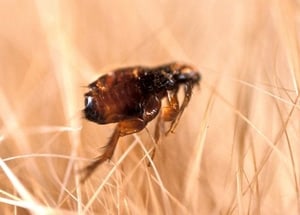If you have been searching for creatures that are known to be voracious feeders, fleas fit that description. These insects are small in size, fast in their movement, and cause much trouble to pets like cats and dogs as well as humans.
You can encounter fleas anywhere you go, even in homes where hygiene is a priority. It is important to learn how to deal with them when there is an infestation within your living space.
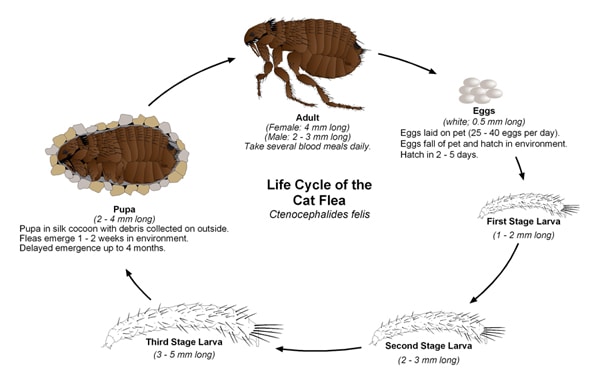
Life cycle of the cat flea
Illustration by: Scott Charlesworth, Purdue University
“What do fleas look like?” That is the question that most people ask. If you cannot answer it, you may find it hard to deal with these insects. Fortunately, I am here to help you.
Why Should You Know How to Identify Fleas?
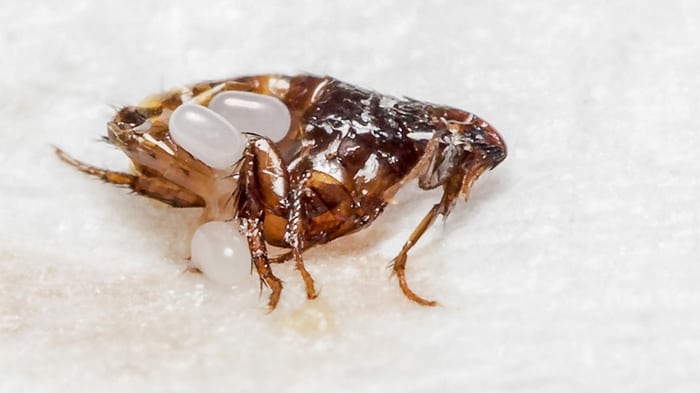
A flea infestation can cause many problems within your household. You should know when there is an infestation early so that you can take measures and deal with fleas before the problem gets to a level where it is hard to control them.
The risk of infestation depends on where you live. For instance, those who live in cold places are at a lower risk of infestation because these insects prefer warm places as their area of breeding.
What Do Fleas Look Like to the Human Eye?
These creatures are small in size and are mostly found on animals such as dogs and rabbits. The adult fleas prefer humid, moist, and dark places outside and can crawl within your home as they deposit their eggs in favorable places.
These eggs grow into adults and look for safe places to live within your home. They feed on blood from mammals. Do fleas have wings? No, they lack functional wings and can’t fly.
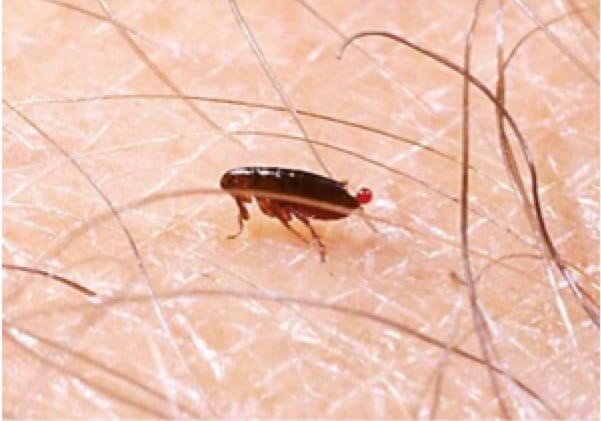
Are fleas visible to the human eye? Yes. Even though these dark red or brownish insects are small, you can see the adults with your eyes. However, you have to look closely. So, what do fleas look like on humans? Below is a picture of a flea on a human body.
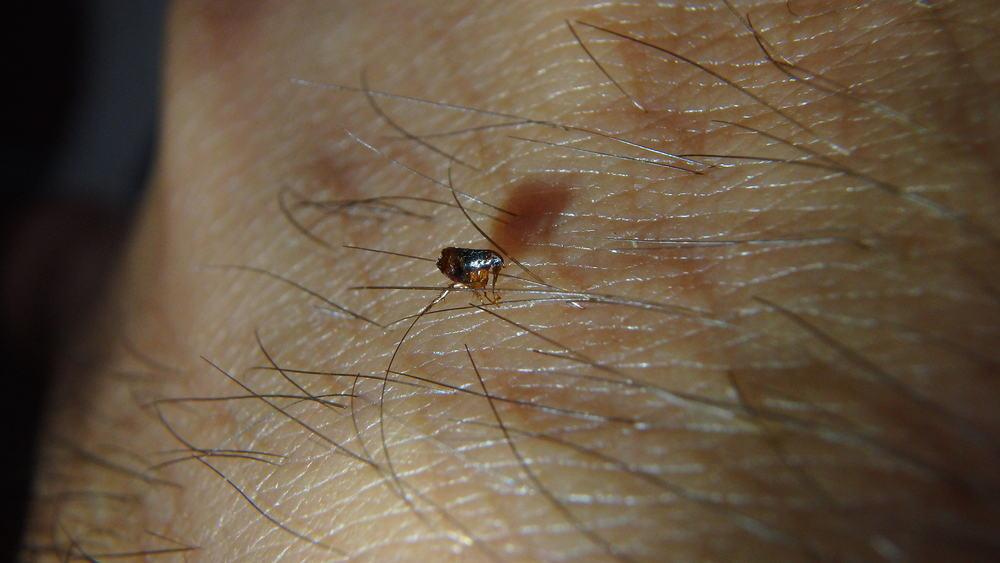
What Are the Physical Characteristics of Fleas?
How big are fleas? As mentioned before, fleas are small insects. Their sizes range from 1mm to 8mm. Do fleas have antennas? Yes, they need them for navigation. The antennae of male fleas are longer than those of female fleas. However, other sense organs are bigger in females than males.
When you look at the body of a flea, you notice that it is flat. That’s why they can easily move through their host’s hair. Their mouths are also shaped like a tube to enable them to suck blood.
Do fleas have eyes? The creatures are known to have two simple eyes that are located beneath the antennae. Below is a picture that shows what flea eyes look like.
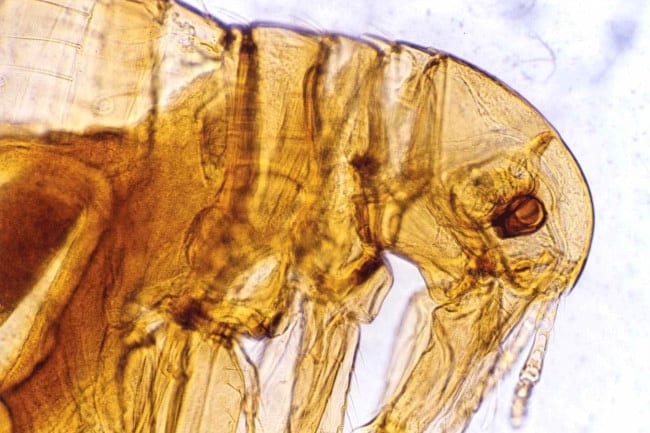
A close look at the flea’s thorax shows that there are three pairs of legs attached to it. The legs end in strong claws that help them grasp the host. There are spines around flea’s head and mouth.
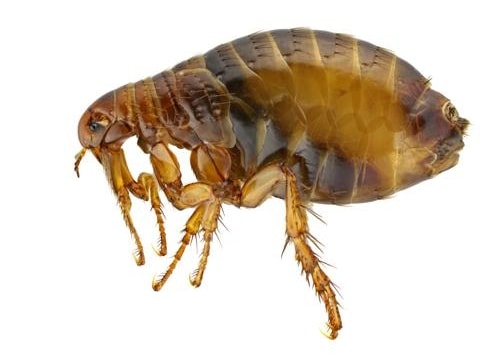
Fleas have flexible abdomens made of ten segments connected by membranes. Abdomens can expand to accommodate food and eggs. New tissues grow in this area to ensure that the abdomen can expand without affecting the stability of the exoskeleton.

What Do Flea Eggs Look Like?
When you want to control fleas effectively, you should start with eliminating their eggs, so you need to know what they look like. It’s not easy to spot a flea egg because it is very small.
However, a close look at the eggs shows that they are oval and have a whitish color. You may mistake them for dandruff. As time goes by, the appearance changes. In the beginning, they are usually translucent. However, they gradually become solid white.
Have you seen images of flea eggs? Here are some of them:
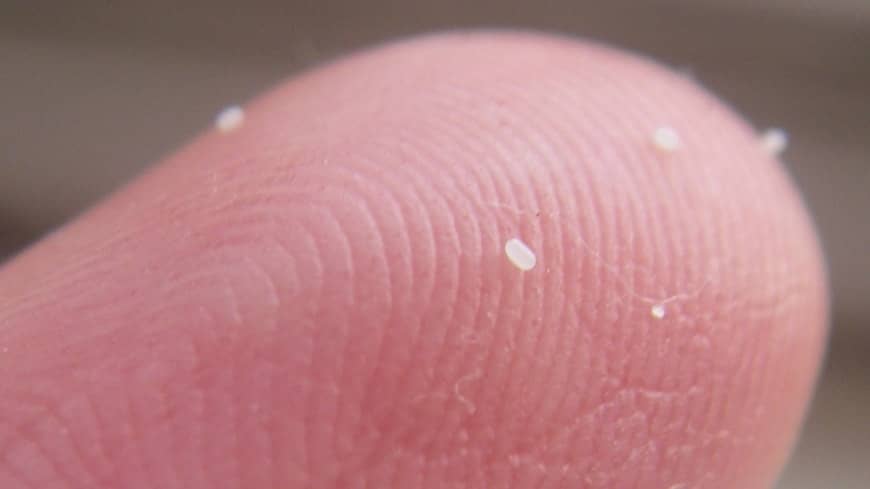
In this flea eggs picture, you see eggs as they look under a magnifying glass:
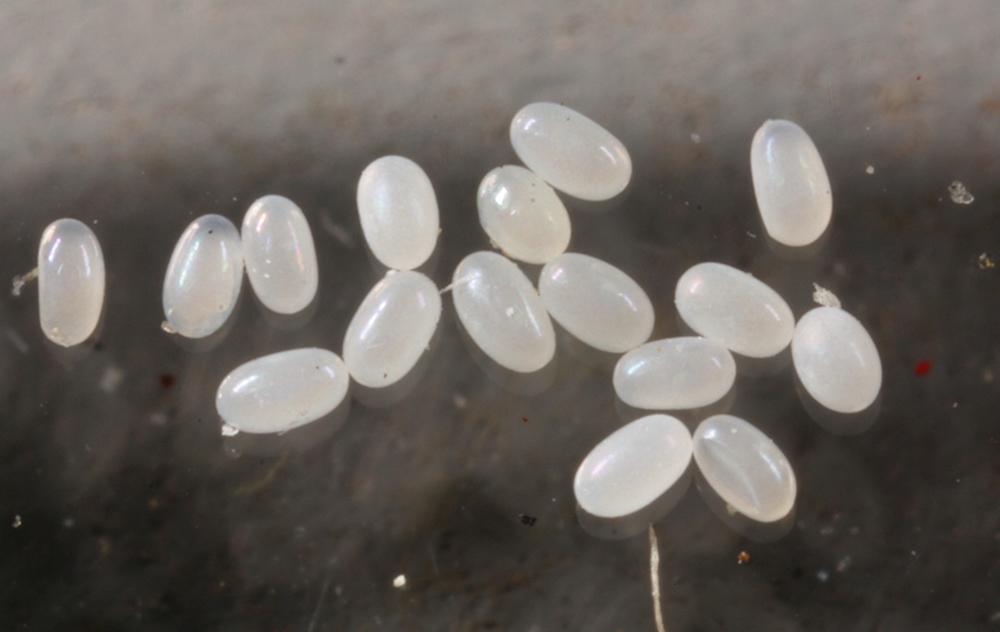
There are four stages in the life cycle of fleas. The development process can take from 14 days to several months. When there is adequate food (blood) source, an adult female flea can lay 35+ eggs in a day.
The egg-hatching period depends on temperature levels and humidity conditions. It takes 2 days or less in warm places with high humid content.
However, the process is slower in cold places. When the conditions are unfavorable, the egg can stay inactive for a long time without hatching while waiting for the right conditions.
The egg can reach the larval stage in as short as 48 hours when the temperatures of 30 degrees Celsius and 70% absolute humidity. Otherwise, the egg can stay for several weeks without hatching.
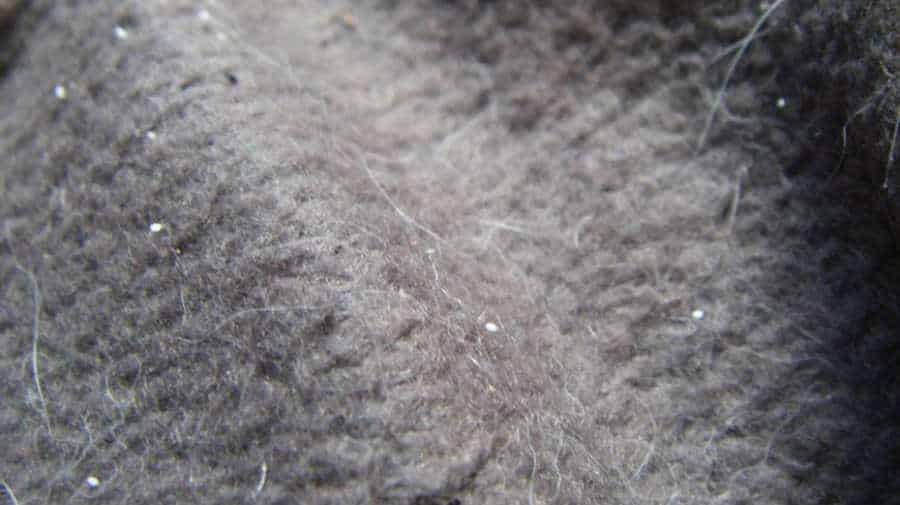
Flea eggs in the carpet – CC Image courtesy of Denni Schnapp
Where are you likely to see the flea eggs? These insects are found on the skin of pets, and that is where the adults get food and lay eggs. The eggs will stay there for some time and slide to other places, for example, your carpet. If it is warm in your house, the eggs can develop into adult insects and continue using your pests as hosts.
How can you control fleas to prevent them from laying eggs on your pets? You should regularly clean your pets with anti-flea shampoo. Moreover, it’s better to clean all bedding in your home and spray ant-flea products to prevent the eggs from developing to adulthood.
[wpsm_titlebox title=”Read more:” style=”main”]
[su_posts template=”templates/teaser-loop.php” id=”6207, 4842, 151″ posts_per_page=”3″ order=”desc”]
[/wpsm_titlebox]
What Does Flea Larvae Look like?
When the flea eggs hatch, they develop into baby fleas called larvae. What do baby fleas look like? They look like tiny whitish worms that are between 2mm and 5mm in length. They also have pale hair. The larvae feed on feces excreted by the adults. Here are some flea larvae images.
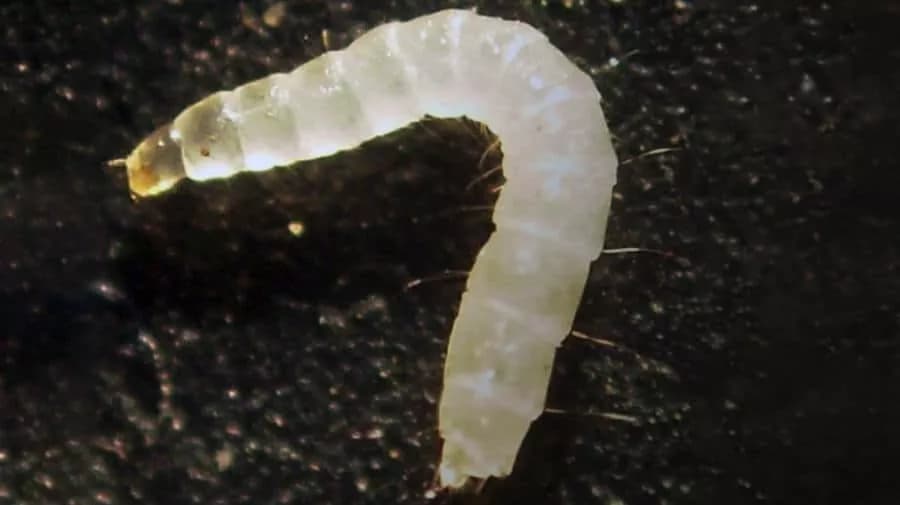
When the larvae get old, they darken, as seen in the picture below.
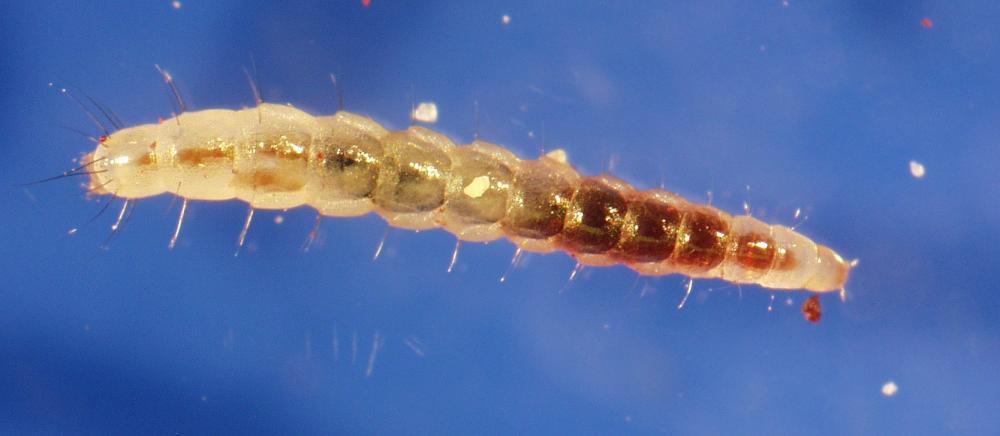
What Do Different Flea Types Look Like?
There are more than 2,000 types of fleas that feed on warm-blooded animals and even humans. But cat fleas and dog fleas cause the most problems. Here are some flea pictures that can help you distinguish one type from others:
What Do Cat Fleas Look Like?
The scientific name of these fleas is Ctenocephalides felis. They live on domestic cats and can be found on dogs. The other animals that host cat fleas are squirrels and rats. There are two developmental stages between an egg and an adult – larvae and pupa.
The adult cat fleas measure between 1mm and 3 mm. They have a reddish-brown color and do not have wings. Take a look at cat flea photos below.
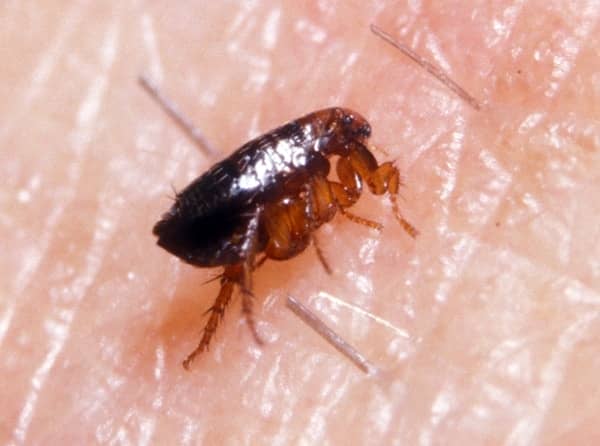
If your cat is infested with fleas, you are likely to see something similar to the picture below.
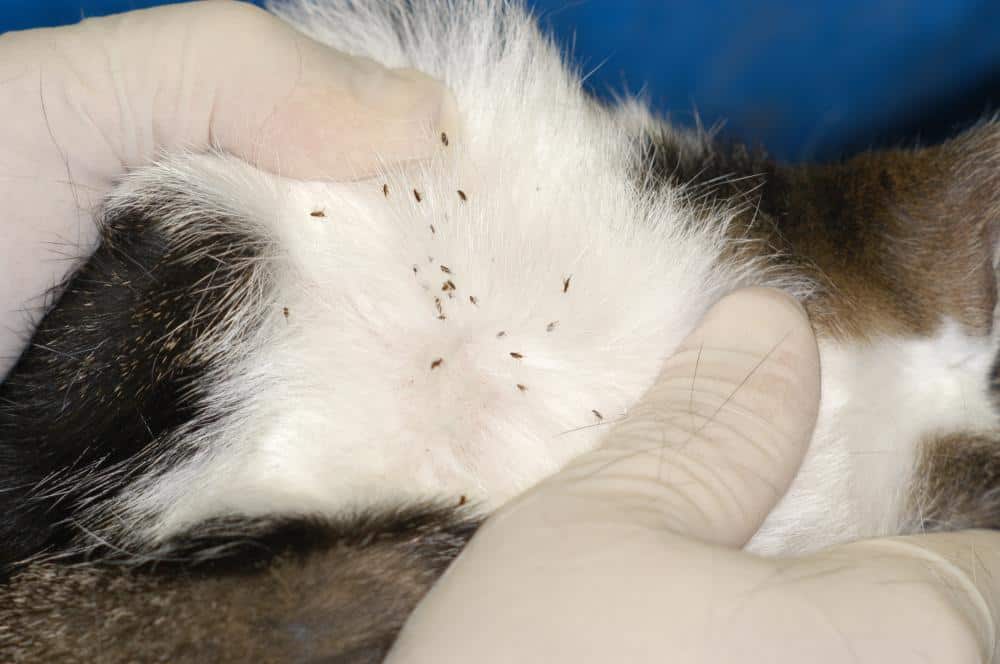
What Do Sand Fleas Look Like?
Sand fleas are mostly found at marshes, beaches, and other coastal areas. They are not actually fleas but are a species of crustaceans. You are unlikely to take them home from a beach, but the females can lay their eggs in your clothing or hair. Here are sand flea images to help you differentiate this type of fleas from the others:
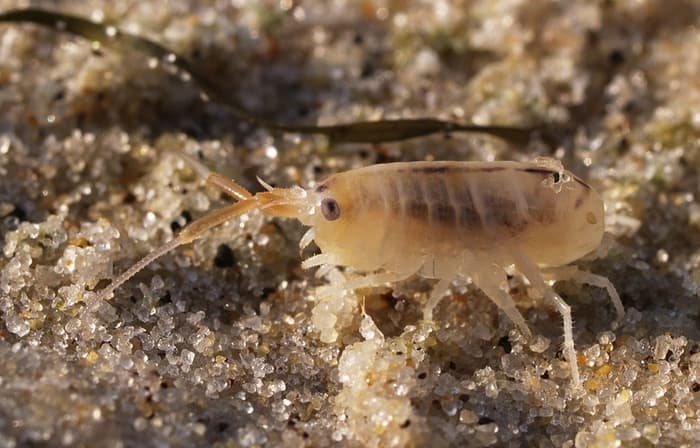
They camouflage perfectly with sand, so it’s not easy to notice them.
What Do Dog Fleas Look Like to the Human Eye?
Dog fleas are scientifically called Ctenocephalides canis. Although they can feed on human blood, they prefer dogs as their hosts. Just like other flea types, they have 4 stages of development with a cycle that takes between 2 to 3 weeks in a good environment.
Adult dog fleas are tiny reddish-brown insects of 1 mm in length. Their mouths are tube-like to help them suck blood. With spines in their legs, they hold onto their hosts tightly. Here is an image of this flea type:
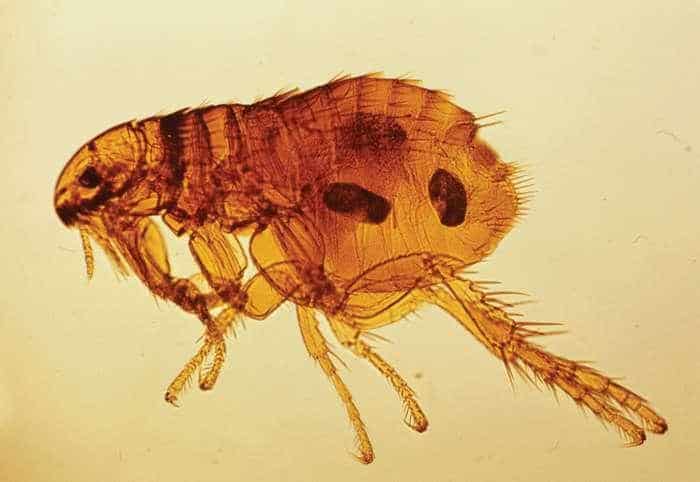
What Does a Flea Bite Look Like? Here Are Details
When a flea bites you, it leaves a round red bump on your skin. There is a halo around the bitten area. The flea bites feel itchy, and some people are very sensitive to them. Rushes may appear if you are allergic to the bite.
Flea bites and mosquito bites may look similar, but flea bites are typically more often found on the lower legs and feet. You should look for signs of fleas around your home to be sure that the bite is not from any other insect within your environment. Here are pictures of flea bites.
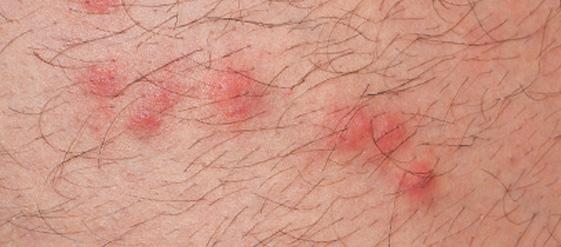
Below is a picture that shows severe flea bites.
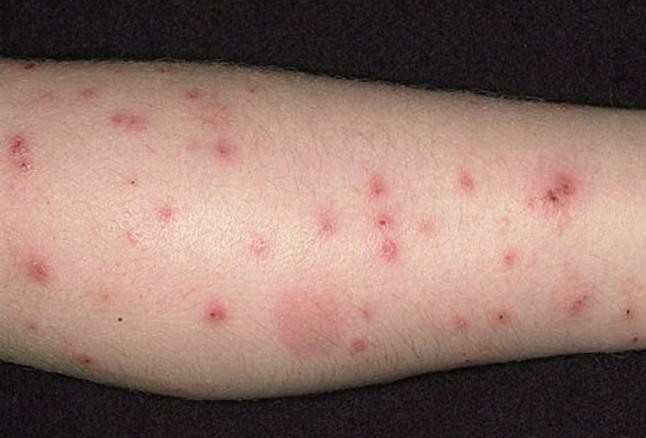
The Bottom Line
Fleas look different depending on their stage of development. For instance, the eggs look different from adult insects or larvae. Moreover, the various types of fleas differ in color and size.
If you want to control fleas within your living space, you should learn to identify dog and cat fleas. You do not want a situation where their bites cause discomfort to you or your pets. I hope that this article will help you learn more about different types of fleas and easily identify them.
Have you ever had a flea infestation in your home? Did it take you long to recognize their presence? What remedy did you use? Share your experience in the comment section.
Also read:
- How to Get Rid of Sand Fleas
- How to Kill Fleas on Humans
- Seresto Flea Collar Review
- Do Flea Collars Work
- Bugs That Look Like Fleas
- Flea Exterminator Prices
References:
- Controlling Fleas and Ticks on Your Pet (U.S. Environmental Protection Agency):
https://www.epa.gov/pets/controlling-fleas-and-ticks-your-pet - Illnesses from Mosquito, Tick, and Flea Bites Increasing in the US (Centers for Disease Control and Prevention):
https://www.cdc.gov/media/releases/2018/p0501-vs-vector-borne.html

